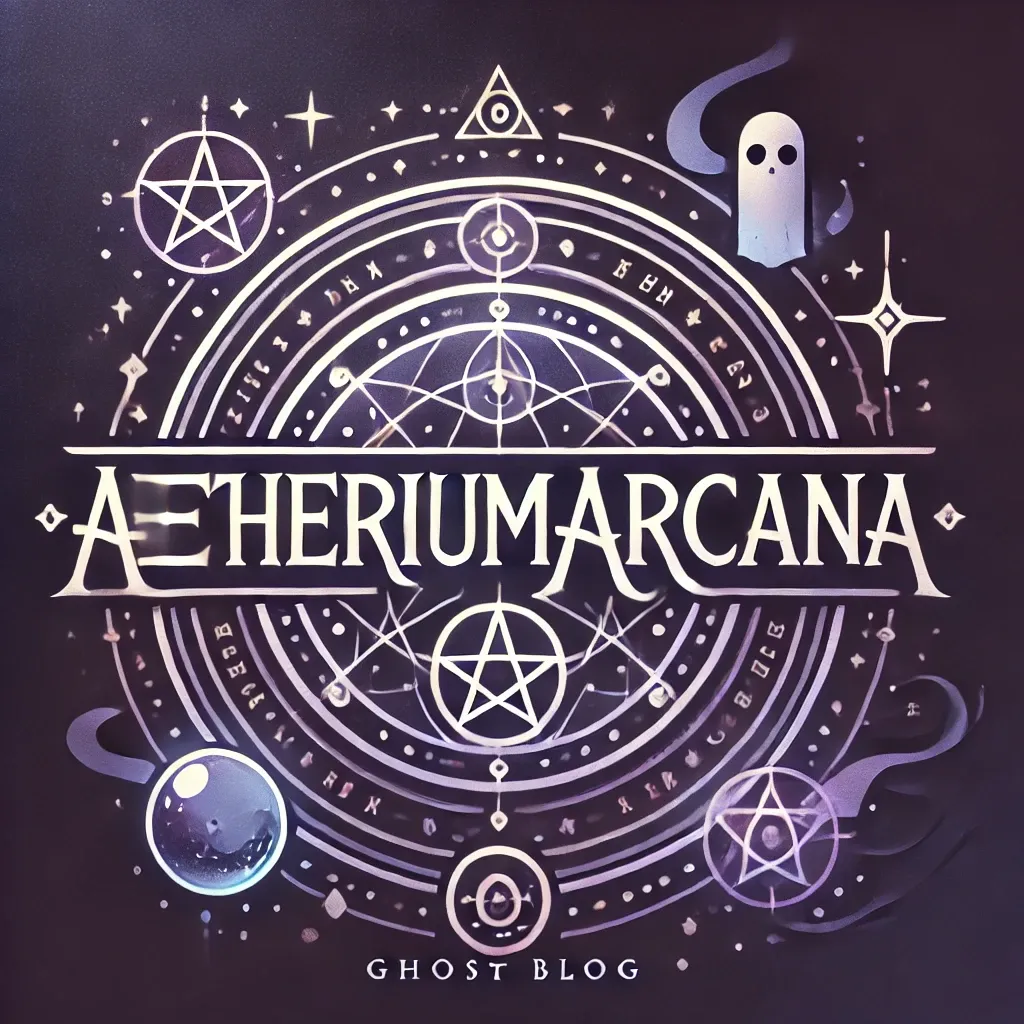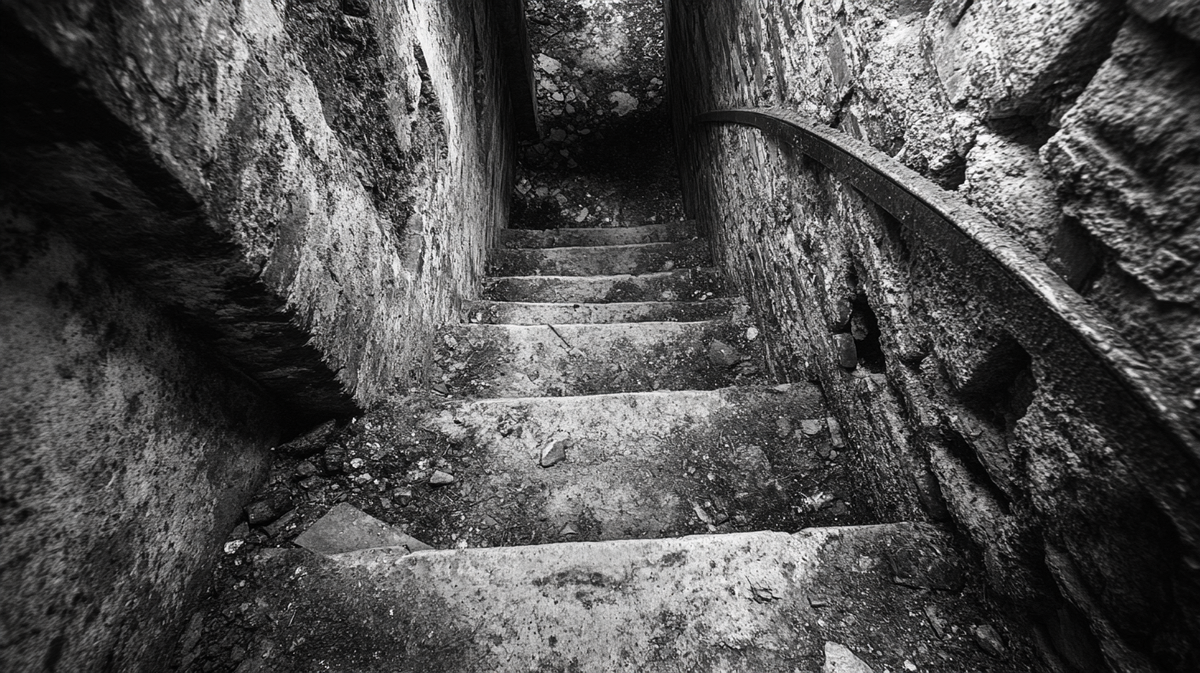The Descent into the Familiar Below
In the stories of H. P. Lovecraft, horror does not always descend from the stars—sometimes it rises from the basement. Beneath the decaying mansions of Providence, under the overgrown farmhouses of Dunwich, and within the foundations of forgotten towns, there yawns an abyss of tunnels, vaults, and crypts. While much criticism rightly focuses on Lovecraft’s "cosmic indifferentism"¹, his subterranean spaces offer a more intimate terror. They are more than backdrops—they are potent symbols of ancestral guilt, mythic memory, and cosmic intrusion made manifest in the soil beneath our feet.
This theme is especially rich in Lovecraft’s New England tales, where the horror of place is tied to both personal lineage and regional history. New England itself becomes a haunted palimpsest: a land where colonial cemeteries, Puritan repression, and buried prehuman ruins intermingle. This article focuses on Lovecraft’s use of underground architecture—cellars, labyrinths, tombs, and hidden chambers—as literary mechanisms of revelation and doom.
The Rats in the Walls: Cellars as Time Machines
One of Lovecraft’s most chilling explorations of subterranean horror is The Rats in the Walls (1924)², a story that begins in classic gothic mode. The narrator restores an ancestral estate, Exham Priory, but discovers that below its foundations lie ruins older than recorded history. As he investigates the sounds of vermin, he descends deeper, through layers of construction, into caverns carved by his own depraved ancestors.
These catacombs contain remnants of an ancient practice: generations of human livestock bred and consumed in ritualistic madness. The architectural descent mirrors a psychological one, reflecting Lovecraft’s profound anxiety about atavistic regression³. The deeper the narrator goes, the more his rational mind gives way to inherited insanity. The cellar becomes a literal time machine—each layer of stone a chapter in a hidden history. The horror lies not in the future, but in the past that has not died, merely waited.
Charles Dexter Ward: Labyrinths of Identity
A more ambitious architectural horror unfolds in The Case of Charles Dexter Ward (1927)⁴. The titular Ward, fascinated by genealogy, uncovers documents about his 18th-century ancestor Joseph Curwen—a necromancer who built a complex network of subterranean rooms beneath a farm. These chambers are filled with alchemical equipment, incantation glyphs, and vats containing resurrected "essential saltes."
These crypts are not merely secret—they are laboratories of resurrection and soul transference. When Ward emulates Curwen’s studies, he becomes a vessel for his ancestor’s return. The architecture here is intimately tied to identity; the underground space is the stage for reincarnation and possession. Lovecraft blends horror and metaphysics, imagining vaults that are simultaneously psychological (the unconscious) and ontological (the transference of essence). Providence is re-imagined as a city with occult roots that quite literally run beneath its surface.
The Shunned House: Haunted Foundations
In The Shunned House (1924)⁵, Lovecraft shifts from the grandiose to the domestic, but the horror beneath the floorboards is no less cosmic. The story centers on a decrepit Providence house infamous for the death and madness of its occupants. The narrator and his uncle believe a malign influence pervades the basement.
What they find is not a ghost, but a parasitic, quasi-vampiric entity residing in the earth itself, fed by the life above it. Unlike Charles Dexter Ward, which explores subterranean complexity, The Shunned House offers claustrophobic horror: the tight, airless cellar where death literally seeps upward. The house becomes a membrane stretched thin over a rotting wound. The architecture itself is a vector of supernatural infection, rooting the horror not in history, but in geology.
The Outsider: The Castle Beneath the World
Perhaps Lovecraft's most mythically resonant use of underground space is in The Outsider (1921)⁶, where a narrator climbs from a vast, crumbling castle into the world above, only to realize he has emerged from a tomb and is himself a monstrous, undead creature. The story powerfully reverses the usual Lovecraftian descent. Here, ascent leads to horror. The climb from darkness into light does not redeem but exposes a terrible truth about the self. The vaults of the castle are protective and enclosing; the world above is alien and rejecting. This narrative structure brilliantly subverts gothic tropes, making the underground not a prison to escape, but a home from which the narrator is tragically exiled.
Architectures of Ancestry and Amnesia
What binds these stories is Lovecraft’s obsession with ancestry. His protagonists are often antiquarians who confront the architectural inheritance of their bloodlines. The spaces below their homes are not just old—they are willfully unremembered repositories of shame. This connects directly to what scholar S. T. Joshi identifies as Lovecraft’s fear of "hereditary degeneracy" and the fragility of civilization³.
This is not accidental. Lovecraft’s horror rests on the idea that the past is never truly dead, only buried. The cellar in The Rats in the Walls is a monument to a once-noble family’s fall into cannibalism, a direct manifestation of fears about atavism corrupting a supposedly superior bloodline. Curwen's labs in Charles Dexter Ward represent the perversion of Enlightenment reason, with scientific inquiry twisted into a means of defying death and nature. These architectural metaphors store and conceal the cultural anxieties of their author: a deep-seated terror that civilization is a thin crust over a chasm of primal chaos, and that our own history, if excavated, will reveal not glory, but monstrosity.
Conclusion: The Stone Beneath the Story
Lovecraft’s subterranean architecture is not simply for setting; it is narrative architecture. Each cellar, tomb, or crypt is a buried text, and the protagonist’s descent mirrors the reader’s own archaeological unearthing of truth. The deeper one goes—into the plot, into the ground—the more the cosmos unravels.
In the final analysis, Lovecraft's cellars are sacred spaces of blasphemy. They are shrines to the unknowable, libraries of forbidden knowledge, and laboratories of ancestral sin. Beneath every house in New England lies not merely a foundation, but an abyss—and it is through that abyss that Lovecraft’s most enduring horror rises.
Notes and Works Cited
¹ Houellebecq, Michel. H. P. Lovecraft: Against the World, Against Life. McSweeney's, 2005. Houellebecq famously argues that Lovecraft's core theme is a complete rejection of humanism in favor of an indifferent cosmos.
² Lovecraft, H. P. "The Rats in the Walls." First published in Weird Tales, March 1924.
³ Joshi, S. T. I Am Providence: The Life and Times of H. P. Lovecraft. Hippocampus Press, 2010. Joshi’s biography extensively details Lovecraft's personal anxieties regarding race, class, and heredity, which are foundational to interpreting his fiction.
⁴ Lovecraft, H. P. The Case of Charles Dexter Ward. Written in 1927, first published in abridged form in Weird Tales, May and July 1941.
⁵ Lovecraft, H. P. "The Shunned House." Written in 1924, first published in Weird Tales, October 1937.
⁶ Lovecraft, H. P. "The Outsider." First published in Weird Tales, April 1926.
Suggestions For Further Study
Davis, Stephen J., and Philip H. Sites, editors. Re-Reading H. P. Lovecraft. Mercer University Press, 2023. A collection of modern critical essays exploring various facets of Lovecraft's work.
Harman, Graham. Weird Realism: Lovecraft and Philosophy. Zero Books, 2012. An exploration of Lovecraft’s fiction through the lens of object-oriented ontology.
om tat sat


Member discussion: